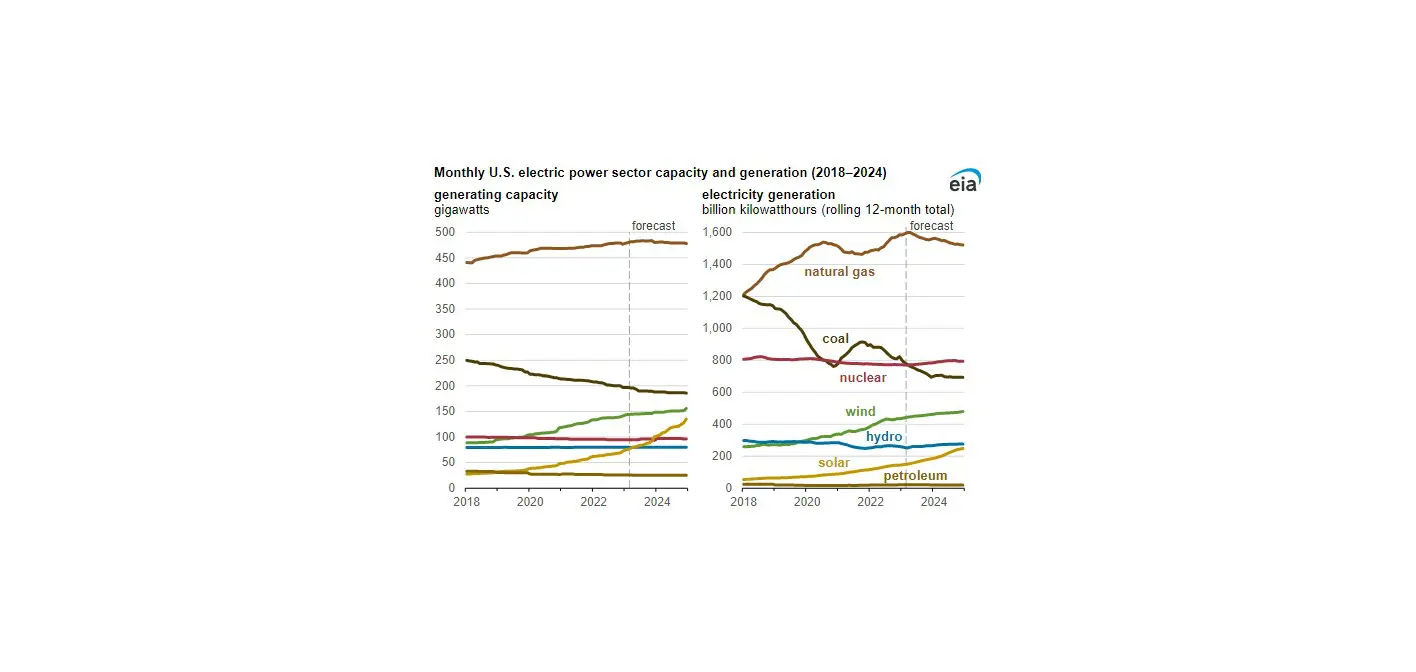
Rising Renewables

In its latest Short Term Energy Outlook, the US Energy Information Administration (EIA) forecasts that solar, wind, and battery technologies will account for most of the added electric generating capacity in 2023 and 2024. At the end of 2022, the EIA estimates the electric power sector operated 72 GW of solar capacity. It predicts that capacity will increase by 29 GW (40%) in 2023 and by 35 GW (35%) in 2024.
Wind power capacity also increases in the forecast but at a slower pace of 7 GW each year. Battery storage projects, which are often built with solar projects, are also expanding rapidly from their 9 GW of capacity at the end of 2022. The EIA forecasts battery capacity will rise by 9 GW (104%) in 2023 and by 10 GW (54%) in 2024.
Figure 1 illustrates the relationship between installed capacity (left) and electricity generation (right). Because wind, solar, and nuclear have the lowest operating costs, their electricity generation over time mirrors their trend in installed capacity: slightly declining for nuclear and increasing for wind and solar. By contrast, natural gas and coal have higher operating costs, and so their generation can vary over time depending on demand levels and the relative operating cost of other technologies.
In contrast to the growth in renewables, generating capacity from coal continues to decline. The EIA expects that 9 GW of capacity at coal-fired power plants (which collectively measured 197 GW at the end of 2022) will retire in 2023 and 2 GW will retire in 2024. This represents a 6% decline in coal capacity over the two-year period.
Although some new natural gas power plants will come online over the forecast, the EIA expects a small net reduction (less than 1%) in US natural gas capacity in 2024 as several relatively large natural gas-fired power plants retire.
Nuclear capacity declined last year by about 1% with the retirement of the 0.8-GW reactor at the Palisades nuclear power plant in Michigan. One of the reactors at the Diablo Canyon nuclear plant in California (1.1 GW) is scheduled to retire in November 2024, but the EIA expects overall nuclear capacity to increase with the addition of two reactors at the Vogtle power plant (Units 3 and 4, totaling 2.2 GW) by the end of 2024.









